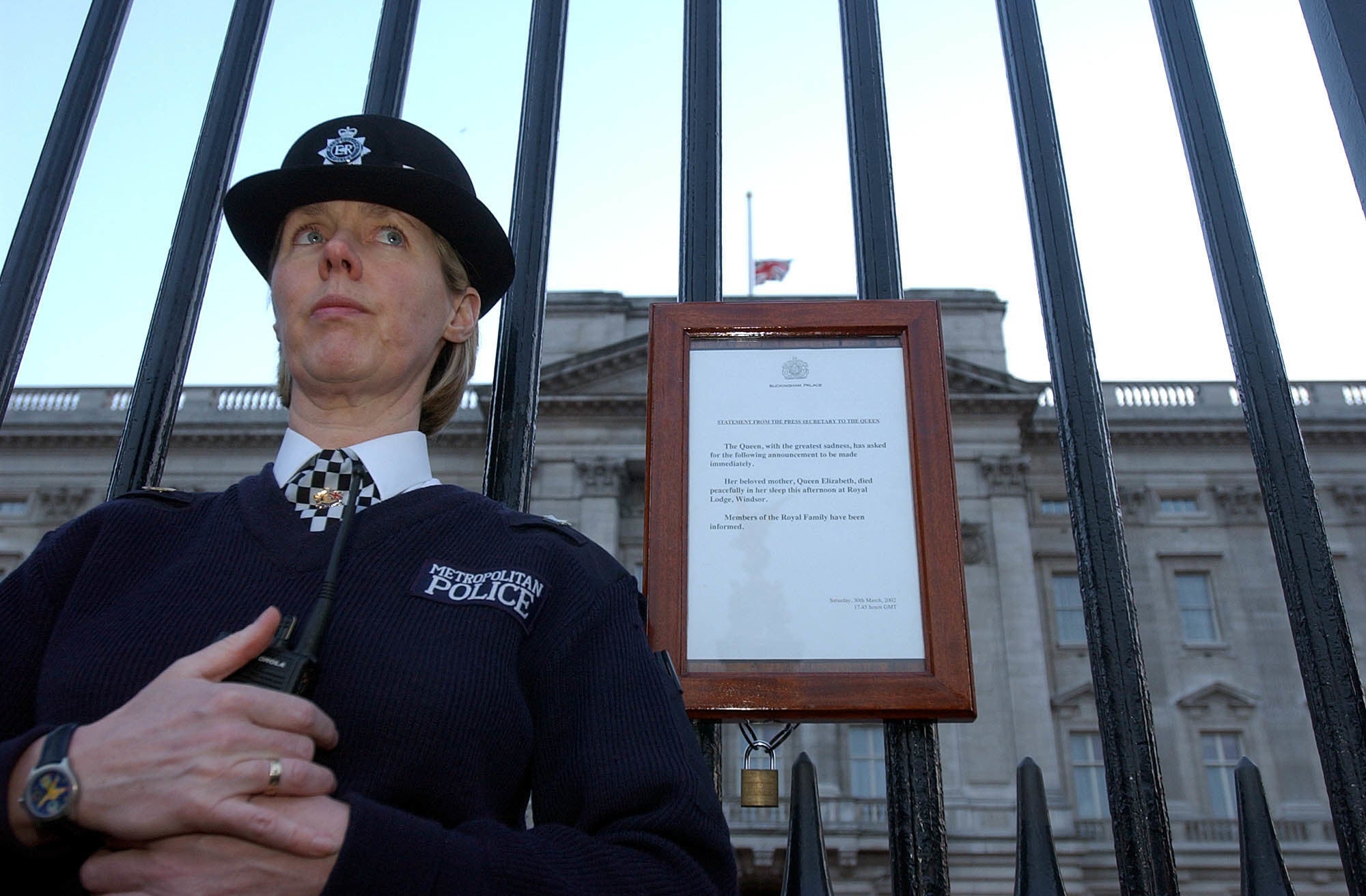Royal births and deaths confirmed traditionally by notices at Buckingham Palace
The brief bulletin is placed on view to formally announce the news to the public.

Your support helps us to tell the story
From reproductive rights to climate change to Big Tech, The Independent is on the ground when the story is developing. Whether it's investigating the financials of Elon Musk's pro-Trump PAC or producing our latest documentary, 'The A Word', which shines a light on the American women fighting for reproductive rights, we know how important it is to parse out the facts from the messaging.
At such a critical moment in US history, we need reporters on the ground. Your donation allows us to keep sending journalists to speak to both sides of the story.
The Independent is trusted by Americans across the entire political spectrum. And unlike many other quality news outlets, we choose not to lock Americans out of our reporting and analysis with paywalls. We believe quality journalism should be available to everyone, paid for by those who can afford it.
Your support makes all the difference.Royal deaths are usually confirmed with the age-old tradition of placing a notice on show at Buckingham Palace.
A brief bulletin – on paper set in a foolscap imperial-sized dark wooden frame – is used to notify the public of key royal events such as births and deaths.
When the Queen Mother died in 2002, the statement on headed Buckingham Palace notepaper, which features a red royal crest, read: “The Queen, with the greatest sadness, has asked for the following announcement to be made immediately: her beloved mother, Queen Elizabeth, died peacefully in her sleep this afternoon at Royal Lodge, Windsor. Members of the royal family have been informed.”
A police officer stood guard over the glass fronted frame, which is usually fixed to the outside of the iron railings by two small metal chains on the back.
The deaths of George VI and George V were announced this way.
For a sovereign, a notice is also placed on the railings of the house in which they died.
The traditional method of delivering royal news was used for, among other occasions, Prince William’s birth in 1982 and Peter Phillips’s in 1977.
When the Queen gave birth to Prince Andrew in 1960, some 2,000 people crowded around the railings to see the official confirmation.
For each of the births of Prince George, Princess Charlotte and Prince Louis of Cambridge, as well as their cousin Archie Mountbatten-Windsor, the same wooden frame was used to highlight their arrivals.
But on those occasions, the frame was placed on an ornate golden easel on the forecourt of the palace, inside the railings.
Announcements used to be hand-written but now are mostly typed.